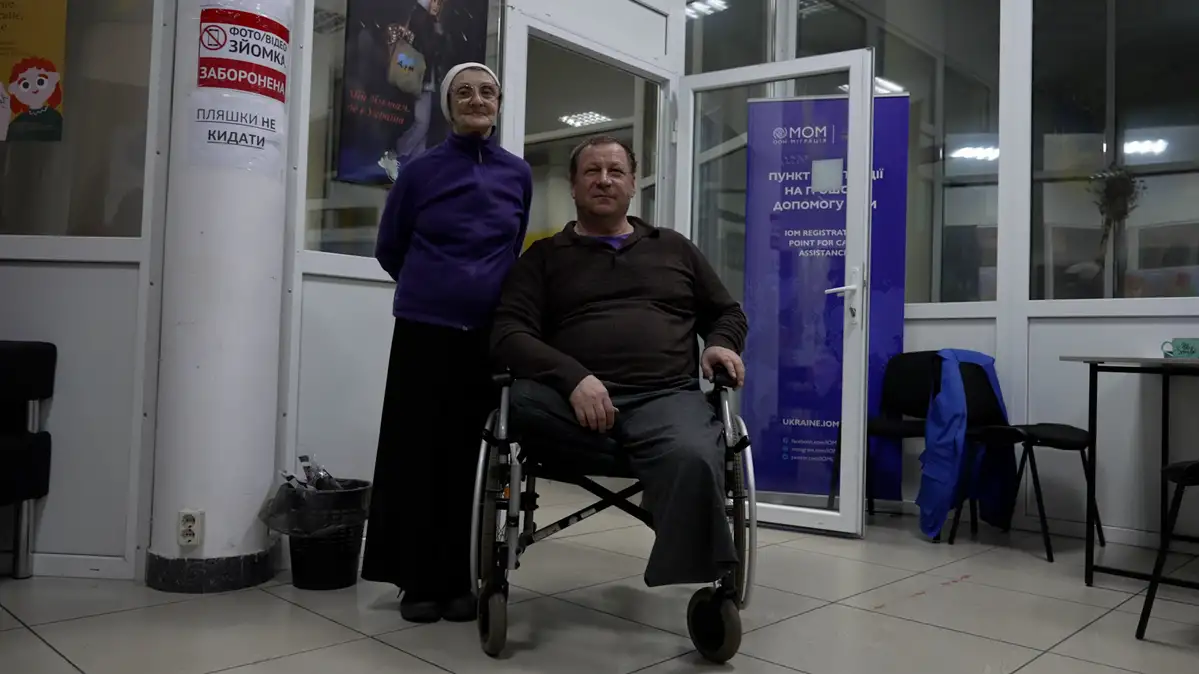Ukrainians take arduous route from Russian-occupied regions

This browser does not support the video element.
Viktor had to send his wife ahead for assistance as they made their way to the Ukrainian border after leaving the occupied Luhansk region.
"I'm here for good. I would not leave unless that was the case because it is so hard to leave," said Viktor, an internally displaced person from the Luhansk region.
This is the so-called "gray zone," a 2-kilometer (1.2-mile) road between the Russian border crossing at Kolotylivka and the Ukrainian village of Pokrovka. A volunteer helps him complete his journey.
Once across, arrivals are driven to a humanitarian center in Sumy, a city in northeastern Ukraine.
"Everyone crossed, but I was a little slower. I had no other way but through Kolotylivka. I could have gone through Europe, but it was too expensive and too long for me personally," said Viktor.
Those who pass through the last remaining border crossing from Russia have usually carried all their worldly possessions with them. Hence the need for volunteers on standby.
"They come with everything they own. The last things they have left," said Vitaliy, volunteer with the NGO Pluriton. "They bring many suitcases with them. It’s difficult for them to carry so much for 2 kilometers. Many of them are elderly people and women. That's why we go out and assist them."
Once at the center in Sumy, they're interviewed by law enforcement agencies. Social services register them and help with paperwork.
Mykhailo left his occupied village in the Kharkiv region. Fighting there is ongoing. His house was hit by shrapnel but he dared not leave for a long time because his wife was ill. After she died, he embarked on a three-day journey to the border crossing. Now he hopes to be reunited with a daughter he's not seen for two years.
"When I left my village, my soul weakened a little bit. I shed a tear and sang 'Glory to Ukraine' as I departed and came here," said Mykhailo.
In March 2023, Kateryna Arisoi, who fled the Ukrainian city of Bakhmut, set up Pluriton, this volunteer center in Sumy for people returning to Ukraine from the occupation. Since then, 21,000 people have passed through it.
"The most important message that we want to convey to all people who come to us is that they are not met here by some random volunteer organization, but by the state of Ukraine. And they are welcome and will be helped," said Arisoi. "This is contrary to the propaganda they have been hearing all these years. Some have been living in the occupied territory for years."
The center continues to operate despite shelling in the Sumy region, with about 40 arrivals per day. For many people living in the occupied territories, it offers the only way to feel at home again.